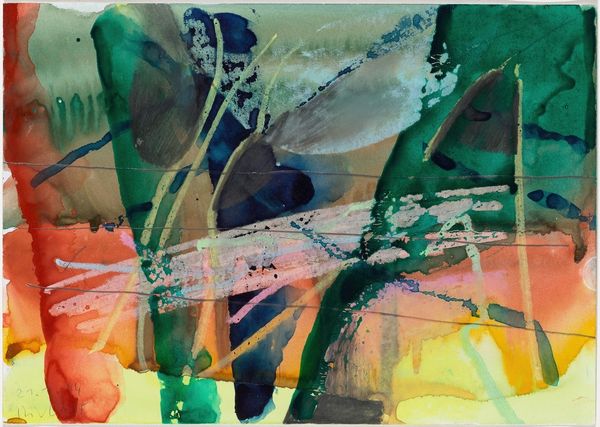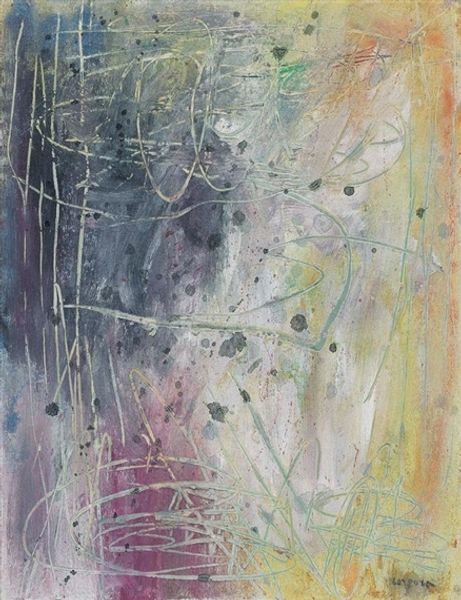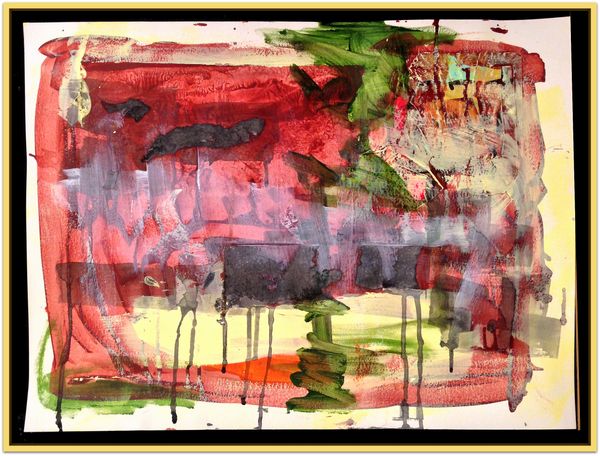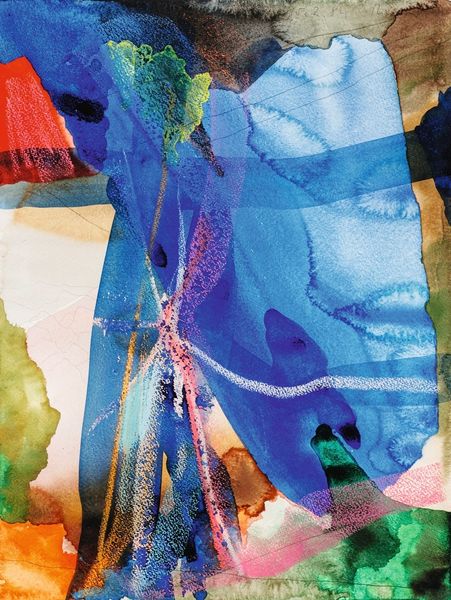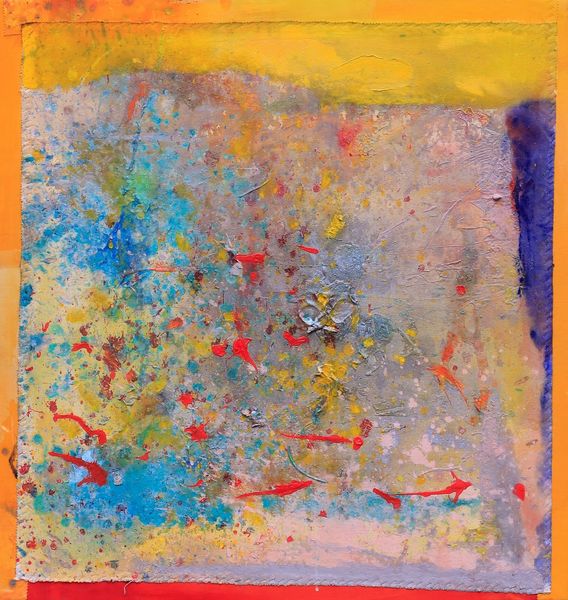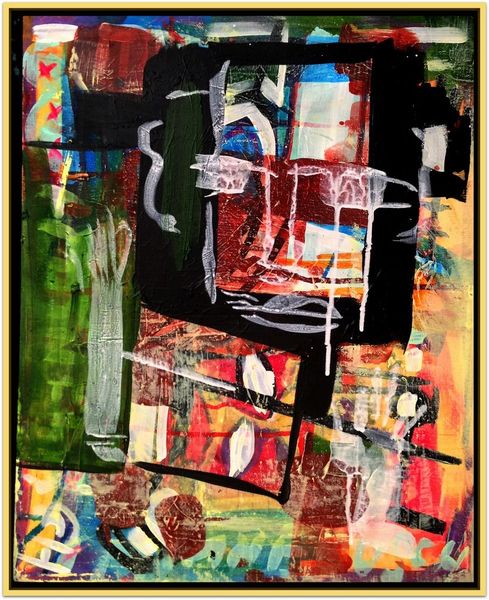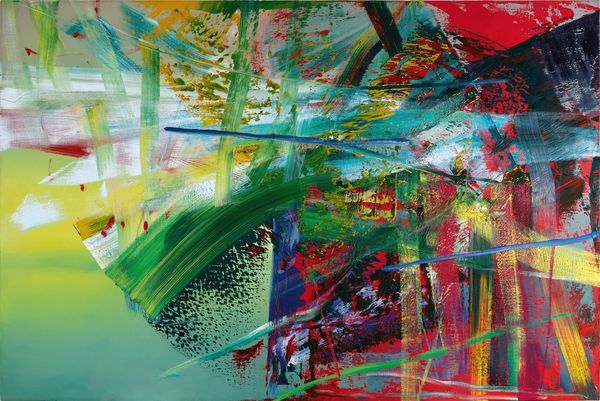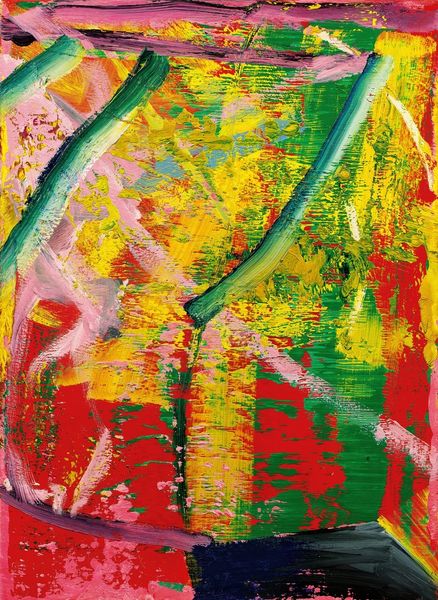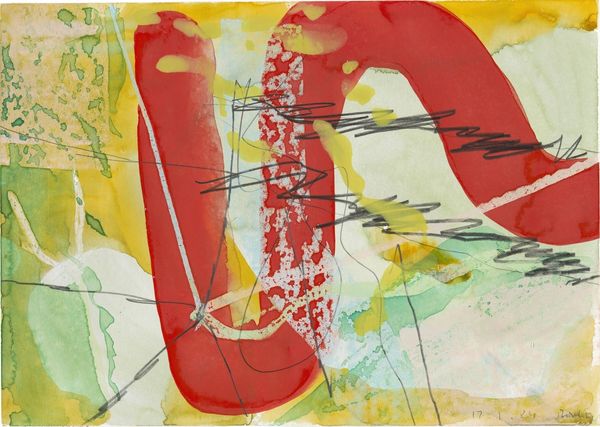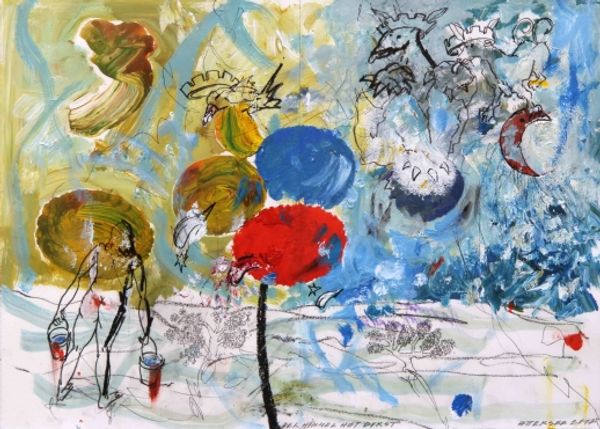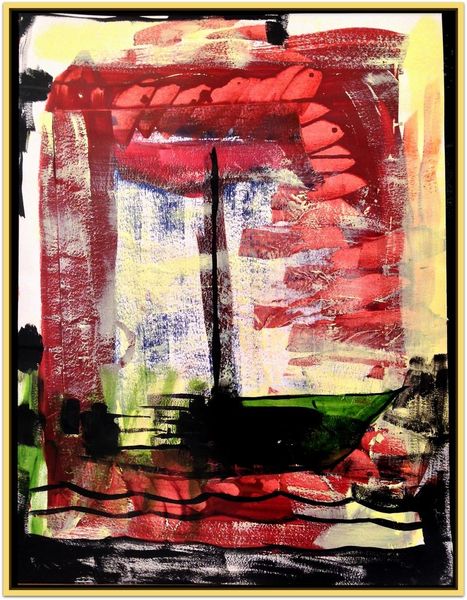
#
capitalist-realism
Copyright: Modern Artists: Artvee
Editor: We're looking at Gerhard Richter's "G.A.4" from 1984, created using watercolor. The composition feels quite chaotic, like a storm of colors and lines clashing against each other. What do you see in this piece, especially considering Richter's background? Curator: Well, considering Richter’s complex relationship with history and representation, this seemingly chaotic abstraction could be interpreted as a deliberate engagement with the political and social anxieties of the 1980s. Abstract Expressionism, which it echoes, became a symbol of Western freedom during the Cold War. Could Richter be critiquing this association, or perhaps investigating the limitations of painting in expressing something beyond itself? Editor: That's a fascinating point. So, the messiness isn’t just random; it’s potentially commenting on how art gets used within a larger socio-political narrative? Curator: Exactly. And the fact that it's watercolor is significant. It's fluid, less controlled than oil, which might imply the instability and uncertainty of that era. The materials and techniques he uses carry a deliberate set of intentions and reflections of society at large. What does it say that he abandoned photographic realism at different periods in his artistic career? Editor: It challenges the assumption that art must neatly represent reality. It could be more about grappling with its complexities. This piece certainly offers more than what meets the eye on the surface. Curator: Precisely. It's not merely a play of form and color; it’s a comment on how art functions, its place in society, and its relation to historical discourse. Editor: I’ll definitely be rethinking abstract art now, especially regarding the background context. Curator: I'm glad to have illuminated Richter’s perspective and shed light on the art’s broader social implications.
Comments
No comments
Be the first to comment and join the conversation on the ultimate creative platform.
